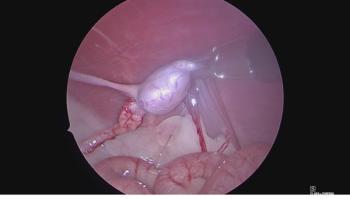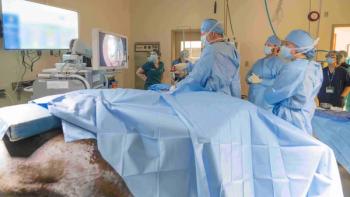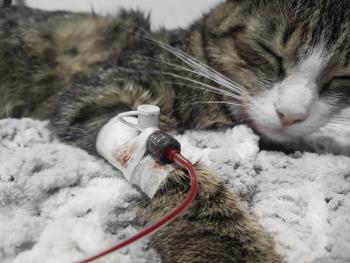
Surgery STAT: Managing IVDD
In last month's column we discussed the pathophysiology of intervertebral disk disease (IVDD). Once IVDD is diagnosed, the clinician must again use the history (onset and course of clinical signs) and the physical exam (neurological status) to formulate the therapeutic plan.
In last month's column we discussed the pathophysiology of intervertebral disk disease (IVDD) and how signalment, history and thorough physical examination are essential for diagnosis. Once IVDD is diagnosed, the clinician must again use the history (onset and course of clinical signs) and the physical exam (neurologic status) to formulate the therapeutic plan (Figures 1 and 2).
Figure 1: Guide for management of IVDD in dogs showing signs of pain without neurologic deficits.
The severity and location of the herniation and the anatomic makeup of the nerve fibers compressed by the herniated disk dictate clinical progression with IVDD. The large spinal canal to spinal cord diameter ratio in the cervical area explains why most dogs with cervical herniations only have pain without neurologic deficits, whereas dogs with thoracolumbar disk herniation more commonly demonstrate neurologic deficits with or without pain.
Figure 2: Guide for management of IVDD in dogs with neurologic deficits.
Early or mild cord compression may result in pain without neurologic impairment. Progressive cord compression and injury, however, result in a predictable course of neurologic deterioration. Proprioceptive fibers are first to be affected, resulting in conscious proprioceptive deficits and ataxia. Partial loss of motor function (paresis) follows, resulting in impaired ambulation and eventual loss of motor function (plegia). Sensory-motor plegia (loss of deep pain sensation) indicates severe, deep injury to the spinal cord. If the injury is severe enough to cause cord necrosis, ascending or descending myelomalecia may result.
Medical management traditionally has been the initial treatment for any dog with IVDD. Pain management is essential and may be accomplished with opioids, anti-inflammatories and gabapentin.
Steroids for IVDD remain controversial, with recent studies suggesting a negative correlation to their use. Keeping a paraplegic IVVD dog on high-dose steroids is not recommended.
Strict rest is essential. Dogs recovering from IVDD should receive a minimum of three weeks' cage confinement.
Physical rehabilitation and acupuncture also are beneficial in dogs recovering from IVDD. Candidates for medical management include dogs that are ambulatory with early signs of pain and mild neurologic impairment; however, recent reports show the incidence of recurrence after medical management of disk herniation may be as high as 50 percent. For this reason and because of the risk of worsening neurologic status over time, many now recommend earlier surgical intervention.
Surgical management of dogs with IVDD often is required to alleviate cord compression and resolve clinical signs.
Dogs with persistent pain and/or neurologic deficits are candidates for surgery. Those with cervical pain and neurologic deficits likely have severe disk compression, luxation or fracture; advanced imaging and surgery should be recommended (Figure 1).
Non-ambulatory paraparetic or paraplegic patients should be referred immediately for advanced imaging such as MRI (Photo 1) or CT with myelogram (Photo 2) and surgical assessment. Time delays while providing medical management to these patients may allow further deterioration of neurologic status and result in a poorer prognosis.
Photo 1: MRI of dog with a lumbosacral disk extrusion.
Prognosis for dogs with IVDD undergoing surgery depends on their preoperative neurologic status. Generally, dogs with deep pain sensation at the time of surgery have a >90 percent chance for recovery. Dogs without deep pain sensation may only have a <50 percent chance for recovery.
Photo 2: CT scan and myelogram of a dog with a large disk extrusion at C2-C3.
Timely surgical intervention coupled with appropriate postoperative restrictions, analgesia and urinary bladder management greatly impacts the outcome as well. Postoperative rehabilitation, including hydrotherapy, is extremely beneficial in the post-surgical IVDD patient (Photo 3).
Photo 3: Laminectomy procedure revealing a large Type II disk extrusion (black arrow) compressing the spinal cord (white arrow).
IVDD is a common problem, particularly affecting chondrodystrophic breeds. Proper diagnosis and localization as well as appropriate and timely intervention can result in satisfactory outcomes for these patients and their owners.
Dr. Jeff D. Brourman is an ACVS board-certified surgeon who is with WestVet Animal Emergency and Specialty Center in Garden City, Idaho. His research interests include cardiothorsic surgery and microvascular surgery.
Newsletter
From exam room tips to practice management insights, get trusted veterinary news delivered straight to your inbox—subscribe to dvm360.




